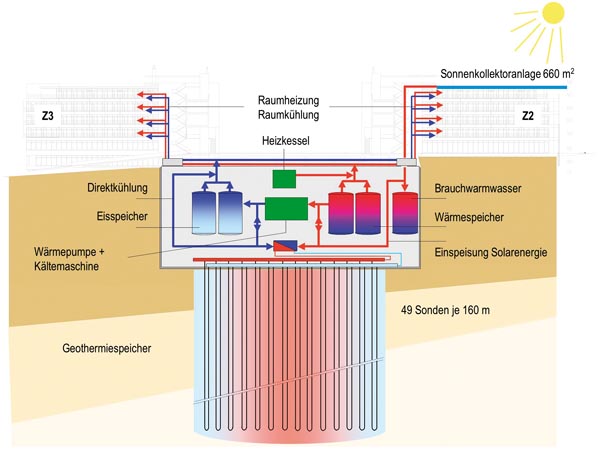- Start / Language
- HHO powered Powerplant
- HHO Systems in Cars
- Geothermal Energy
- Geotherm in Romania
- Partner and Links
- Sponsoring
Terrestrial heat probe
fields
Detailed information
For approximately one decade terrestrial heat probe fields for the heat supply are realized, which are used partly also for the cooling during the summer. These terrestrial heat probe fields consist of a series of drillings, which are generally equipped with two U-tubes from polyethylene for the heat exchange with the ground. The drillings are filled with a mixture from cement and Bentonit, in order to guarantee a good thermal contact between the U-tubes and the drillinghole wall. The necessary number of drillings (4 to 80) as well as their depth (30 to 350 m) depends of the heat requirement and local geological conditions.
The THP are built as close as possible to the building which should be supplied. The lines of the individual THP's are united and supply in such way one or more heat pumps. For heating with low temperature as well as for cooling, a heat transfer liquid is circulating in the floor or in the ceiling of the building.
The function is based on an annual cycle: during the winter the warmth is withdrawed from the ground (cooling of the ground). In the summer, if one cools, stored cold weather is again withdrawed from the ground (heating up of the ground). The building cooling with “free cooling” is energetically seen particularly favourable, since this runs exclusively over the EMS and without refridgerator.
Since THP fields are more complex and more cost-intensive than a single THP for a family house, it is important to define the dimension the complete system correctly in advance, on the basis of the warmth and cold needed . Once the the plant is operating, a proper computerized monitoring during two years, allows a proper and optimized parametring of the system. The necessary planning bases are provided by computer simulations.
